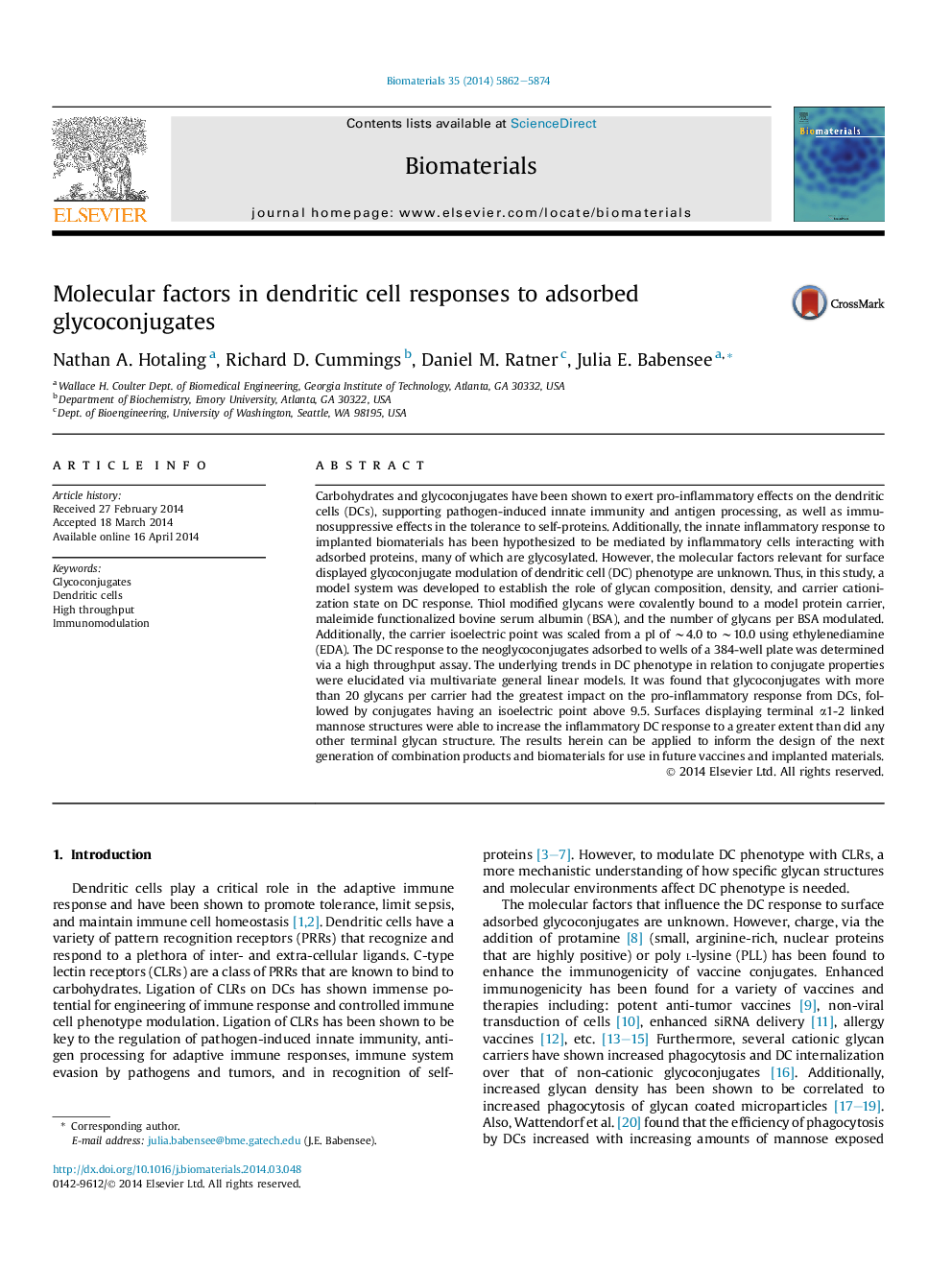| کد مقاله | کد نشریه | سال انتشار | مقاله انگلیسی | نسخه تمام متن |
|---|---|---|---|---|
| 10227749 | 459 | 2014 | 13 صفحه PDF | دانلود رایگان |
عنوان انگلیسی مقاله ISI
Molecular factors in dendritic cell responses to adsorbed glycoconjugates
ترجمه فارسی عنوان
عوامل مولکولی در پاسخ های سلولی دندریتیک به گلیکوکونژوگهات جذب شده
دانلود مقاله + سفارش ترجمه
دانلود مقاله ISI انگلیسی
رایگان برای ایرانیان
کلمات کلیدی
گلیکوکونژوگات، سلولهای دندریتیک، بازده بالا، ایمونوادولوژی،
موضوعات مرتبط
مهندسی و علوم پایه
مهندسی شیمی
بیو مهندسی (مهندسی زیستی)
چکیده انگلیسی
Carbohydrates and glycoconjugates have been shown to exert pro-inflammatory effects on the dendritic cells (DCs), supporting pathogen-induced innate immunity and antigen processing, as well as immunosuppressive effects in the tolerance to self-proteins. Additionally, the innate inflammatory response to implanted biomaterials has been hypothesized to be mediated by inflammatory cells interacting with adsorbed proteins, many of which are glycosylated. However, the molecular factors relevant for surface displayed glycoconjugate modulation of dendritic cell (DC) phenotype are unknown. Thus, in this study, a model system was developed to establish the role of glycan composition, density, and carrier cationization state on DC response. Thiol modified glycans were covalently bound to a model protein carrier, maleimide functionalized bovine serum albumin (BSA), and the number of glycans per BSA modulated. Additionally, the carrier isoelectric point was scaled from a pI of â¼4.0 to â¼10.0 using ethylenediamine (EDA). The DC response to the neoglycoconjugates adsorbed to wells of a 384-well plate was determined via a high throughput assay. The underlying trends in DC phenotype in relation to conjugate properties were elucidated via multivariate general linear models. It was found that glycoconjugates with more than 20 glycans per carrier had the greatest impact on the pro-inflammatory response from DCs, followed by conjugates having an isoelectric point above 9.5. Surfaces displaying terminal α1-2 linked mannose structures were able to increase the inflammatory DC response to a greater extent than did any other terminal glycan structure. The results herein can be applied to inform the design of the next generation of combination products and biomaterials for use in future vaccines and implanted materials.
ناشر
Database: Elsevier - ScienceDirect (ساینس دایرکت)
Journal: Biomaterials - Volume 35, Issue 22, July 2014, Pages 5862-5874
Journal: Biomaterials - Volume 35, Issue 22, July 2014, Pages 5862-5874
نویسندگان
Nathan A. Hotaling, Richard D. Cummings, Daniel M. Ratner, Julia E. Babensee,
